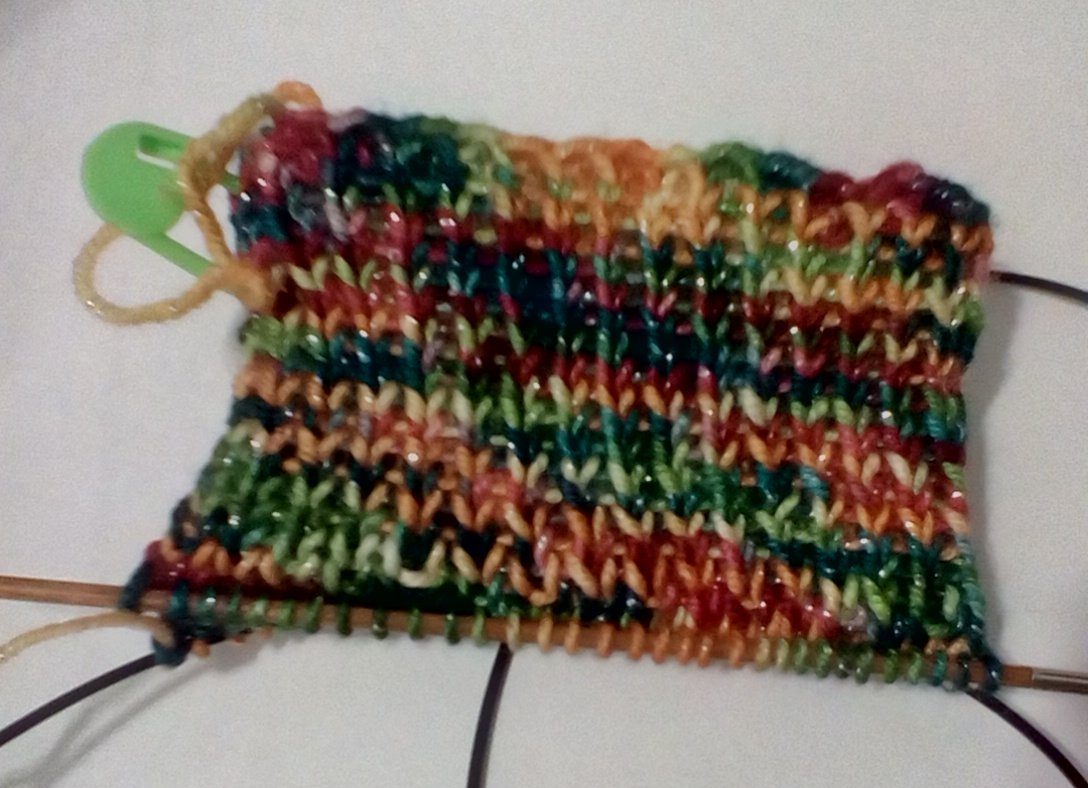
My last blog included that I do use lifelines, especially on big or complicated projects. For me, “complicated” can mean it has a pattern. Indeed not long after my last post I discovered that I had made an error in my pattern that I repeated row after row. I had to rip out the sweater almost back to the lifeline in the picture. Lifelines in that case didn’t work because I didn’t realize there was an error. I had to rip out past lifelines.
This picture shows how I’m putting in a lifeline every 24 rows, or two repeats of the pattern. Ideally I’d put them in every 12 rows, one pattern, but I’m not willing to take the time to put in a lifeline that often. Guess I’m feeling pretty confident I have the pattern figured out and I’m unlikely to drop a stitch.
A lifeline is simply another piece of yarn, preferably a thinner yarn than what you are knitting with, that you “sew/weave” through the stitches before starting the next row. This way the stitches are on a string so that if you have to rip out, you can simply pull out the yarn until you reach the string. Then you feed your knitting needle back through the stitches and start again.
Lifelines aren’t that essential is your are knitting simple purl or knit stitches. But I find them essential if I’m knitting more complicated stitches like k2tog or ssk where multiple stitches are joined to make one. Or where I’m increasing stitches It’s easy for me to drop a stitch when trying to undo these stitches on a rip out.
In theory I could remove the earlier lifelines since I shouldn’t need to rip back to where I’m at. I’m confident the knitting is “right” to the most recent lifeline. But I’ve decided to wait until the sweater is done and remove them all at once. I have plenty of ‘waste” yarn so I do not need to reuse my lifelines although I have done that in the past. I just feel safer with all these lifelines.


